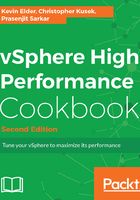
Introduction
Device and I/O virtualization involves managing the routing of I/O requests between virtual devices and the shared physical hardware. Software-based I/O virtualization and management, in contrast to a direct pass through to the hardware, enables a rich set of features and simplified management. With networking, virtual NICs and virtual switches create virtual networks between VMs that are running on the same host, without the network traffic consuming bandwidth on the physical network.
NIC Teaming consists of multiple physical NICs and provides failover and load balancing for VMs. VMs can be seamlessly relocated to different systems using VMware vMotion while keeping their existing MAC addresses and the running state. The key to effective I/O virtualization is to preserve these virtualization benefits while keeping the added CPU overhead to a minimum.
A hypervisor virtualizes the physical hardware and presents each VM with a standardized set of virtual devices. These virtual devices effectively emulate well-known hardware and translate VM requests to the system hardware. This standardization on consistent device drivers also helps with VM standardization and portability across platforms because all VMs are configured to run on the same virtual hardware, regardless of the physical hardware in the system. In this chapter, we will discuss the following:
- Various network performance problems
- Causes of network performance problems
- Solutions to correct network performance problems